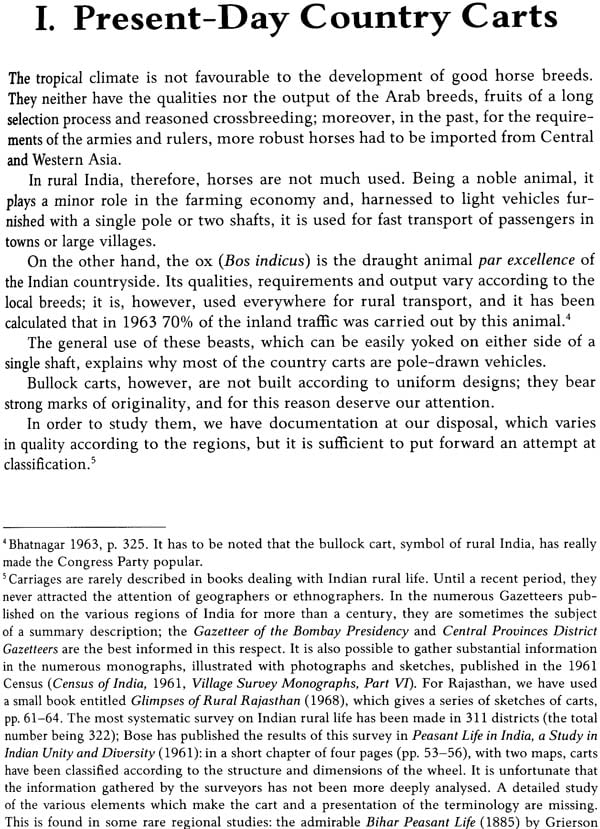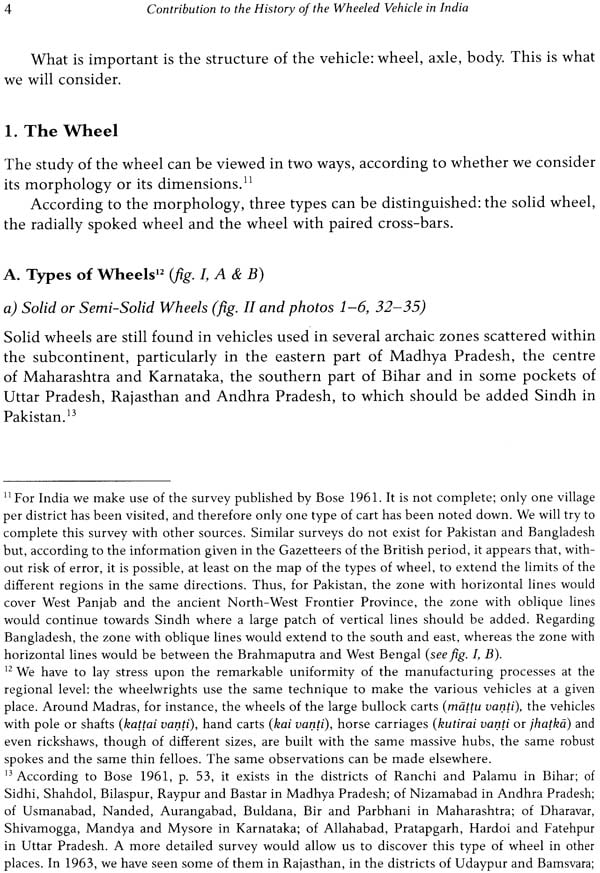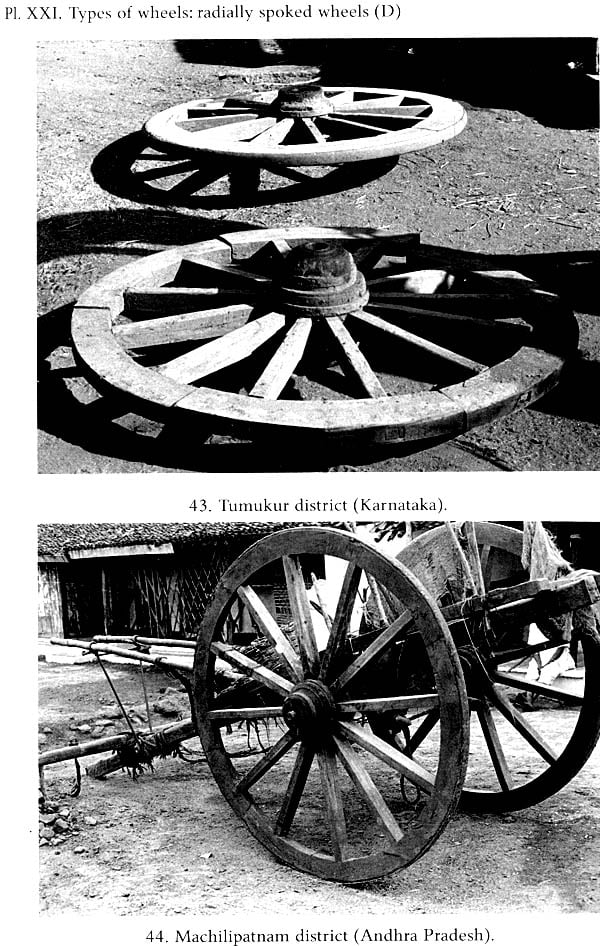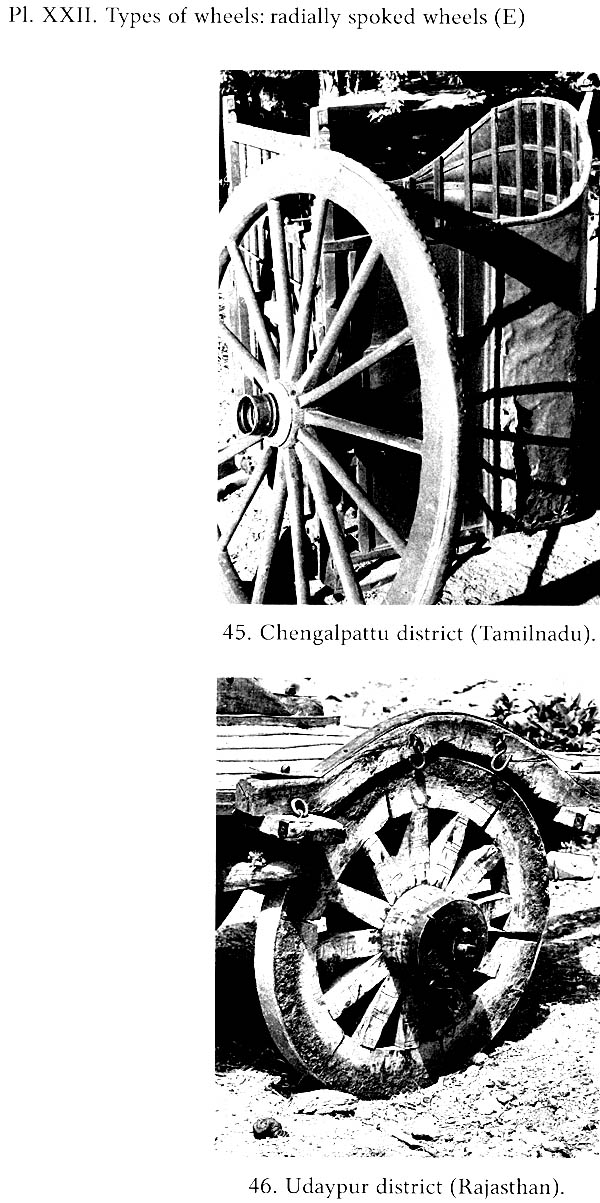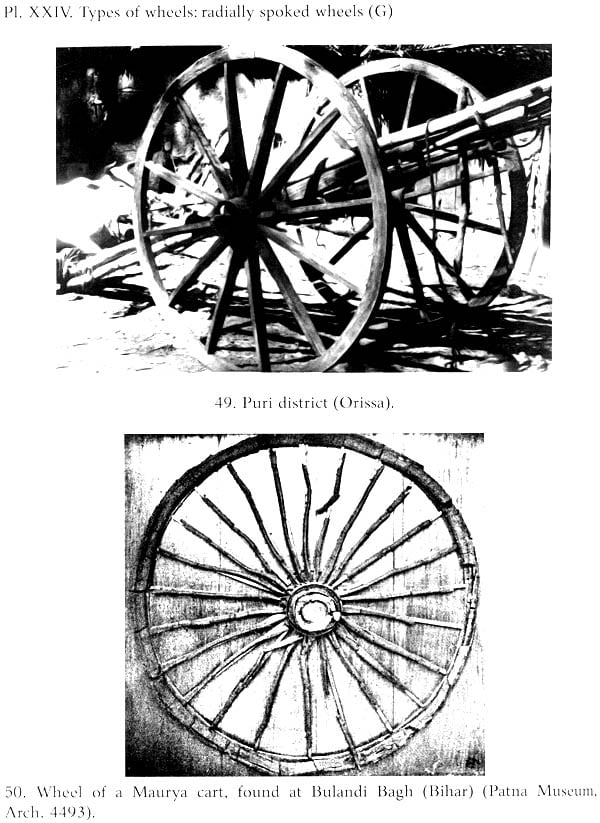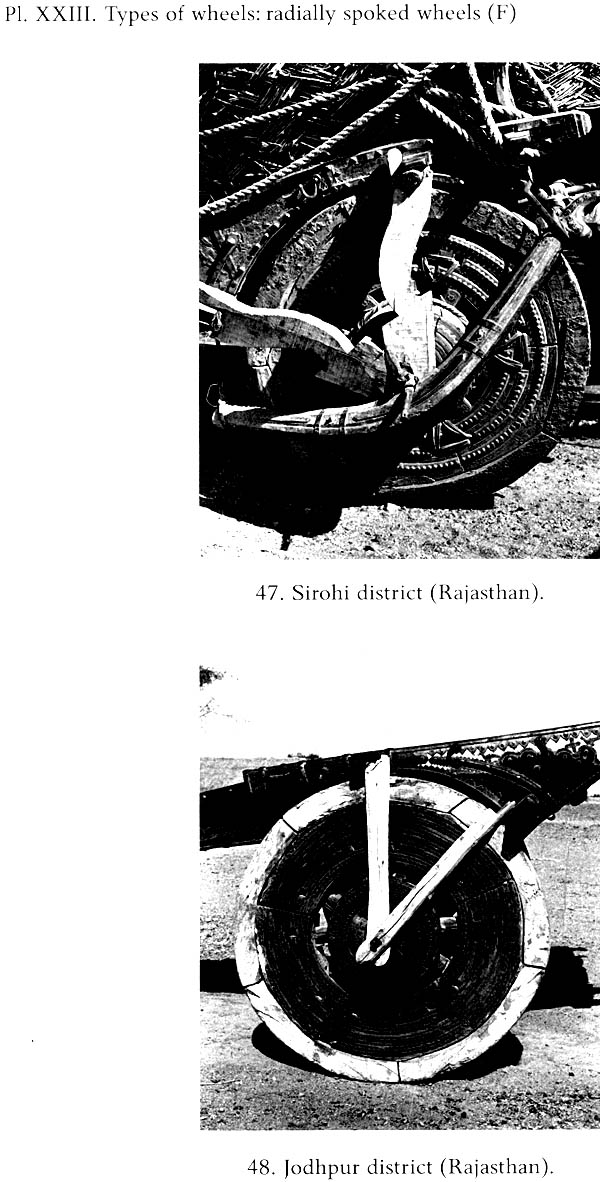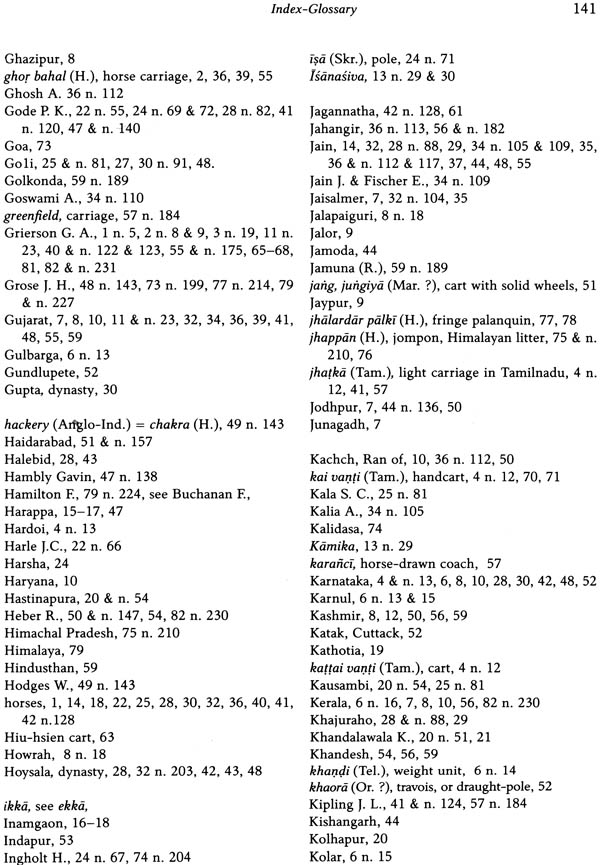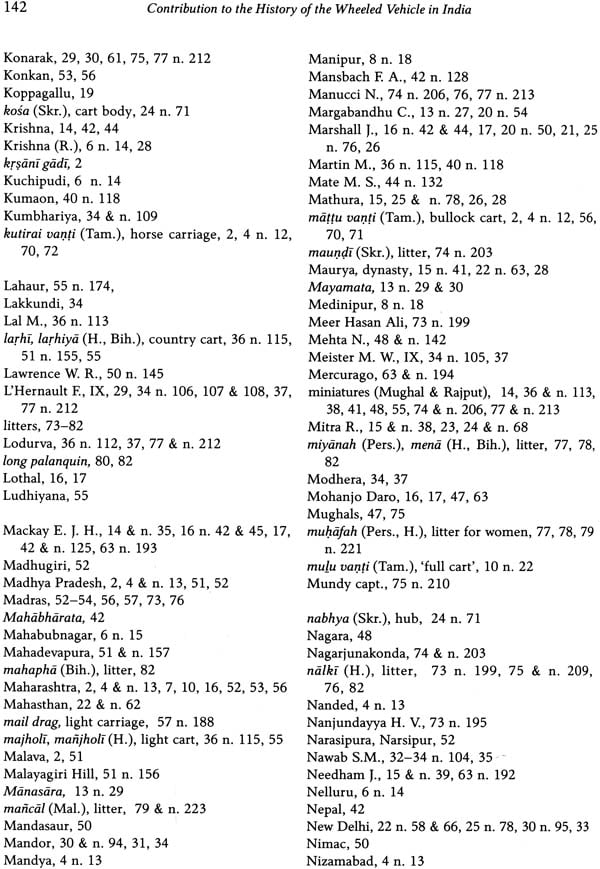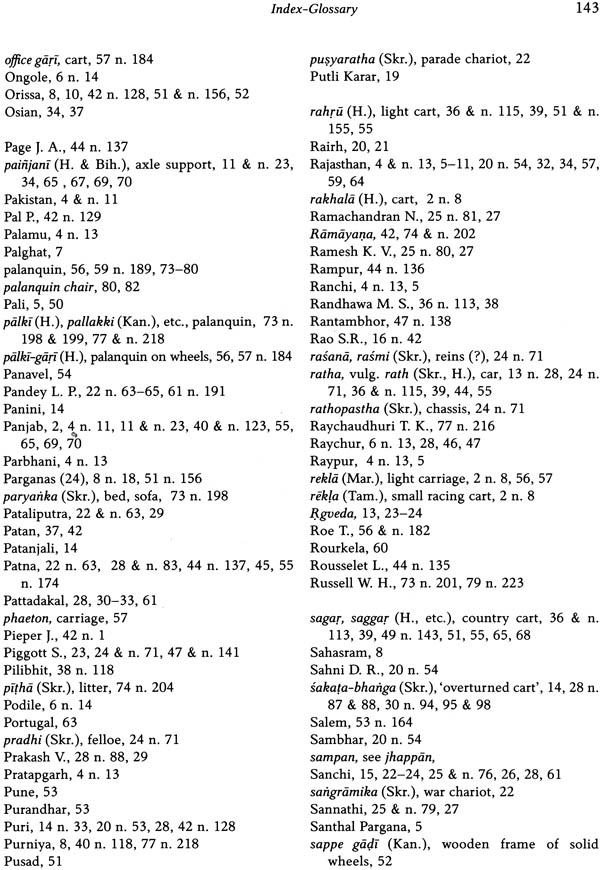
Contribution to The History of The Wheeled Vehicle In India
Book Specification
| Item Code: | NAL260 |
| Author: | Jean Deloche |
| Publisher: | Institut Francais De Pondichery |
| Language: | English |
| Edition: | 2014 |
| ISBN: | 9788184702019 |
| Pages: | 157 (Throughout B/W Illustrations) |
| Cover: | Paperback |
| Other Details | 11.0 inch X 8.0 inch |
| Weight | 580 gm |
Book Description
About the Book
This book is a contribution to the history of the wheeled vehicle in India. In the first part we examine the present carriages, their types and their distribution; then, in the light of these clearly discernible facts, we intend to interpret the sources concerning, on the one hand, the wheeled vehicles from Protohistory to the Mughal period, and on the other hand, the changes introduced by the transport revolution of the middle of the 19th century.
It shows that, prior to the British period, the northern plains of India were favoured with a variety of vehicles for travelling and for goods traffic, many of them with a rudimentary form of suspension, while in the Deccan, most of the country carts were heavy, ill-constructed and not fit for distant journeys.
The reason why the people of Hindusthan showed much greater ingenuity than those of the Deccan concerning the construction of carts is perhaps due to the fact that, over the centuries, greater attention was given to roads and their maintenance than on the peninsula: at least since Asoka, the sovereigns of the Gangetic Plain were interested in the question of roads, and particularly in the good condition of the Grand Trunk Road and the axes leading to the Gulf of Cambay.
Jean DELOCHE, a senior member of the Ecole francaise d'Extreme-Orient and the French Institute of Pondicherry, has devoted his academic career to the study of Indian History. Among the numerous books and articles written by him, can be mentioned: Origins of the Urban Development of Pondicherry according to Seventeenth- Century Dutch Plans, 2004; Senji (Gingi) A Fortified City in the Tamil Country, 2005; Studies on Fortification in India, 2007; Adventures of Jean-Baptiste Chevalier in Eastern India, 2008; Four Forts of the Deccan, 2009; Pierre Sonnerat, Nouveau Voyage aux Indes Orientales (1786-1813), 2010; A Study in Nayaka-Period Social Life: Tiruppudaimarudur Paintings and Carvings, 2011; Ancient Fortifications of the Tamil Country as Recorded in Eighteenth-Century French Plans, 2013.
This work is the outcome of various studies. Initially, our purpose was to gather information on the carriages of the Mughal period in order to complete a general study on Transport and Communication in India prior to Steam Locomotion, since then published.' but as the documents concerning this period are insufficient in this particular field (a few literary sources, a rare iconography), we had to considerably extend the scope of our investigation in terms of time. We tried, on the one hand, to gather the various sources of the earlier period, by making an inventory of the representations provided by archaeology, and, on the other hand, to accumulate as much information as possible concerning today's carriages: a thick dossier from which the elements of this study have been taken.
The synthesis put forward here is provisional. For years we have amassed notes, indexes and outlines, which periodically, following a visit to a monument, a reading or a meeting, were improved or changed, each explicit question raising a further question, each unproven hypothesis being reconsidered. We could continue ad infinitum. It was time to stop and communicate the fruits of this work to others.
I wish to express my gratitude to all those who, by their kindness, competence and knowledge, have helped with the completion of this book."
The history of the wheeled vehicle in India remains unexplored. Given the present state of our knowledge, it is not possible to explain the origin of the form of draught animal equipment or of the types of vehicles used in Ancient and Medieval India. All we can say is that, in the various representations of carriages we have collected, certain characteristics have been preserved through the Ages until today. It is not a rare occurrence to note devices still known to village cart-wrights in these documents.
A careful examination of today's farm carts would allow us to partly overcome the inadequacy of the ancient documents and throw light on certain obscure problems raised by the sources.
The main features of material civilisation are the fruits of long development and, for lack of extensive and precise information, we believe that to question the past through today's facts is a method which is not only legitimate but fecund, and explains the plan of our study.
In the first part, we examine the present carriages, their types and their distribution. Then, in the light of these clearly discernible facts, we intend to interpret the sources concerning, on the one hand, the wheeled vehicles from Protohistory to the Mughal period, and on the other hand, the changes introduced by the transport revolution of the middle of the nineteenth century.
| Foreword | ix | |
| Abbreviations | x | |
| Illustrations | xi | |
| Introduction | xiii | |
| I. | Present-Day Country Carts | 1 |
| Principles of Classification | 2 | |
| 1. | The Wheel | 4 |
| A. | Types of Wheels | 4 |
| a) | Solid or Semi-Solid Wheels | 4 |
| b) | Radially Spoked Wheels | 6 |
| c) | Wheels with Paired Cross-Bars | 8 |
| d) | Thickness of the Felloe | 8 |
| B. | Size of the Wheels | 10 |
| 2. | Axles, Supports, Body | 10 |
| II. | Carriages in Indian Iconography | 13 |
| Introduction | 13 | |
| Sources for the Ancient Period | 13 | |
| Vehicles in Classical Literature | 13 | |
| Archaeology | 14 | |
| 1. | Wheeled Vehicles in the Protohistoric Period | 15 |
| A. | Miniature Wheeled Carts from Protohistoric Times | 16 |
| B. | Wheeled Vehicles Depicted in Rock Paintings | 16 |
| 2. | Wheeled Vehicles in the Early Historic Period | 20 |
| A. | Miniature Wheeled Carts from the Early Historic Period | 20 |
| B. | Carts with Radially Spoked Wheels Depicted in Stone Reliefs from the Early Historic Period | 20 |
| a) | War and Processional Chariots | 22 |
| b) | Farm Carts with Radially Spoked Wheels | 24 |
| 3. | Wheeled Vehicles in Peninsular India (7th c.-13th c.) | 28 |
| A. | Farm Carts with Solid Wheels | 28 |
| B. | Carts with Radially Spoked Wheels | 30 |
| Bullock Carts | 30 | |
| Horse Carriages | 32 | |
| 4. | Wheeled Vehicles in North-West India (8th c.-16th c.) | 32 |
| 5. | Wheeled Vehicles in North India (16th c.-19th c.): Rudimentary Form of Suspension Units | 34 |
| 6. | Shafts, Four-Wheeled Vehicles | 40 |
| A. | Shafts | 40 |
| B. | Four-Wheeled Vehicles | 42 |
| Concluding Remarks | 47 | |
| III. | Distribution of Country Carts and the Revolution in Road Construction in the Middle of the Nineteenth Century | 49 |
| 1. | The Long Survival of Carts with Solid Wheels | 50 |
| 2. | Road Construction and Expansion of Carts with Radially Spoked Wheels | 52 |
| a) | Peninsular India | 53 |
| b) | Contrast with the Northern Plains | 55 |
| c) | Regional Diffusion of Technology | 56 |
| d) | European Influences | 56 |
| Conclusion | 59 | |
| Appendices | 61 | |
| 1. | The Wheel with Paired Cross-Bars: a Matter for Investigation | 61 |
| 2. | Examples of Country Carts: Bihar, Panjab, Tamilnadu | 65 |
| Bihar Country Carts | 65 | |
| Panjab Country Carts | 65 | |
| Tamilnadu Country Carts | 70 | |
| 3. | Litters and Palanquins | 73 |
| Sources | 74 | |
| A. | Litters Carried by Means of Two Shafts | 74 |
| B. | Litters Carried by Means of a Single Pole, Palanquins | 75 |
| C. | European Influences | 79 |
| D. | Litters in Bihar at the End of the Nineteenth Century | 82 |
| Photographic Plates | 83 | |
| Bibliography | 119 | |
| Index-Glossary | 139 |
